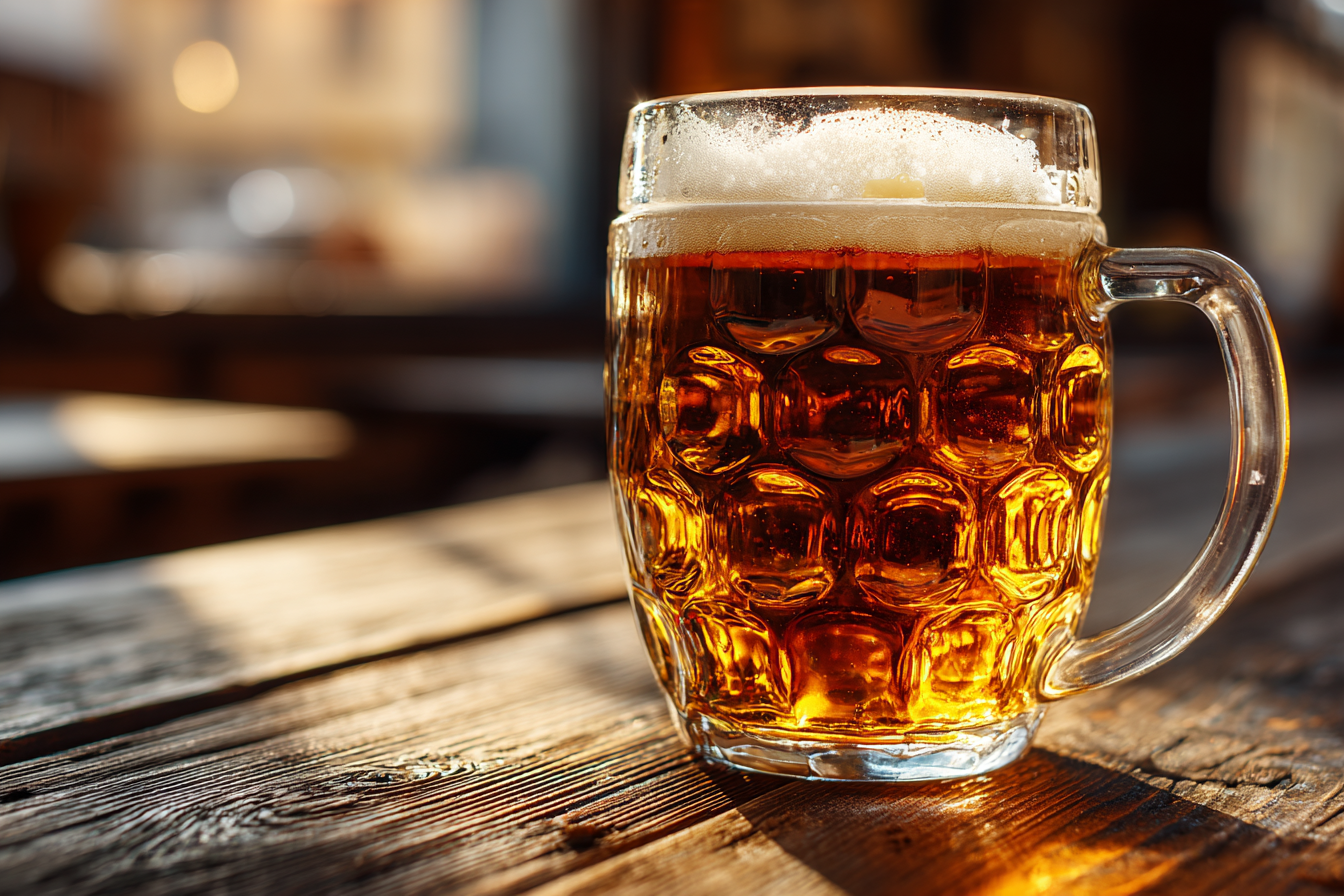Czech amber lager is a beloved style of beer known for its rich malt character, balanced bitterness, and inviting amber hue. To truly appreciate its full range of flavors and aromas, serving it correctly is essential. Whether you’re a seasoned beer enthusiast or just discovering this classic brew, paying attention to the serving temperature, glassware, pouring techniques, and overall presentation can take your Czech amber lager experience to the next level. In this guide, we’ll explore practical tips to help you enjoy this traditional beer at its finest.
Ideal Serving Temperature for Czech Amber Lager
Serving temperature plays a crucial role in how a Czech amber lager expresses its flavors and aromas. Unlike lighter pilsners that are best served colder, amber lagers showcase their malt complexity and subtle hop bitterness more effectively at slightly warmer temperatures.
The ideal serving temperature for Czech amber lager is typically between 45°F and 50°F (7°C to 10°C). At this range, the beer is cool enough to be refreshing but warm enough to release the malt sweetness and aromatic characteristics. Serving it too cold can mute these flavors, while too warm can make the bitterness overly prominent.
One tip for home serving is to store the beer in your refrigerator and then let it sit out for about 10–15 minutes before pouring, allowing it to reach this optimal temperature naturally. If you’re using a keg system, setting your cooler or kegerator to this range will ensure every pour meets the mark.
Best Glassware Choices for Presentation and Aroma
The right glass can enhance both the visual appeal and flavor experience of Czech amber lager. While many beers can be served in generic glasses, amber lager deserves special attention to its presentation.
Here are some of the best glassware options:
- Willibecher Glass: This versatile traditional Czech beer glass features a slightly curved profile that helps concentrate aromas while showing off the beer’s appealing color.
- Pilsner Glass: Taller and slender, a pilsner glass allows the beer’s carbonation and color to shine, but the shape may slightly reduce aroma concentration. Still acceptable for casual occasions.
- Mug or Stein: While common, mugs tend to be heavier and less effective at showcasing aroma. If aesthetics and aroma are priorities, consider thinner glasses instead.
- Tulip Glass: For those who want to accentuate hop aroma more distinctly, a tulip glass gently captures and directs scent to the nose, making it a sophisticated choice.
Ensure the glass is clean and free of any detergent residue, which can interfere with head retention and taste. Rinse the glass with cold water before pouring to avoid premature foaming.
Pouring Techniques to Maintain Head and Carbonation
A proper pour helps develop the inviting head, preserves carbonation, and enhances the overall sensory experience of Czech amber lager. Here’s a step-by-step guide for the perfect pour:
- Tilt the glass at a 45-degree angle: This minimizes agitation and reduces the risk of excessive foam.
- Pour the beer slowly down the side of the glass: Let the beer gently flow, preserving carbonation and minimizing splashing.
- Straighten the glass as it fills: Once it’s around three-quarters full, straighten the glass and pour down the center to create a creamy foam head about 1 to 1.5 inches (2.5 to 4 cm) thick.
- Do not over-pour: A good head traps aroma while protecting carbonation, but too much foam can overwhelm and waste beer.
Keeping bottles and kegs cold right up to pouring time also helps maintain carbonation. If you’re serving from a bottle, handle gently to avoid agitation before pouring.
Storing and Handling Tips Before Serving
How you store and handle your Czech amber lager before serving significantly impacts freshness and flavor:
- Keep it cold: Store your beer in a cool, dark place, ideally refrigerated. Avoid temperature fluctuations that may cause premature aging or off-flavors.
- Protect from light: Amber lagers can be sensitive to light exposure, which may cause “skunky” aromas. Use dark bottles or keep them in opaque containers.
- Handle gently: Shaking or jostling cans and bottles before opening can cause excessive foaming.
- Observe expiration dates: While many Czech amber lagers have decent shelf lives, fresher is always better for optimal taste.
- Use appropriate storage for kegs: Keep kegs chilled and maintain CO2 pressure for consistent carbonation during serving.
Pairing with the Right Environment or Occasion
Enjoying Czech amber lager is not just about the beer itself but also the context in which it’s served. This style is versatile, making it suitable for a variety of occasions and settings.
Ideal occasions and pairings include:
- Casual gatherings and pub settings: Share amber lagers with friends over games or hearty meals.
- Grilled foods and rich meat dishes: The malt sweetness complements barbecue, roasted chicken, sausages, and pork dishes perfectly.
- Fall and cooler weather: Its slightly higher malt body and color make it an appealing choice during autumn months.
- Traditional Czech celebrations: Embrace cultural moments or beer festivals to savor amber lager authentically.
The warm amber color, balanced taste, and moderate carbonation offer a comforting and satisfying experience for a wide range of palates and settings.
Enhancing Your Czech Amber Lager Experience
Serving Czech amber lager properly isn’t hard, but it makes all the difference when it comes to enjoyment. From choosing the right temperature and glassware to perfecting your pour and handling the beer with care, each step contributes to unveiling the rich character that defines this traditional brew.
By following these tips, you not only maximize aroma and flavor but also elevate the visual and tactile appeal, creating a full sensory experience. So next time you raise a glass of Czech amber lager, take a moment to appreciate the craftsmanship and enjoy it at its very best.







